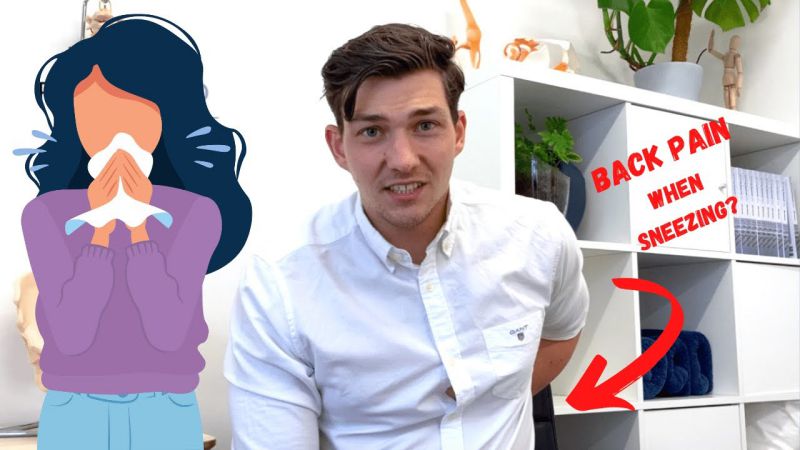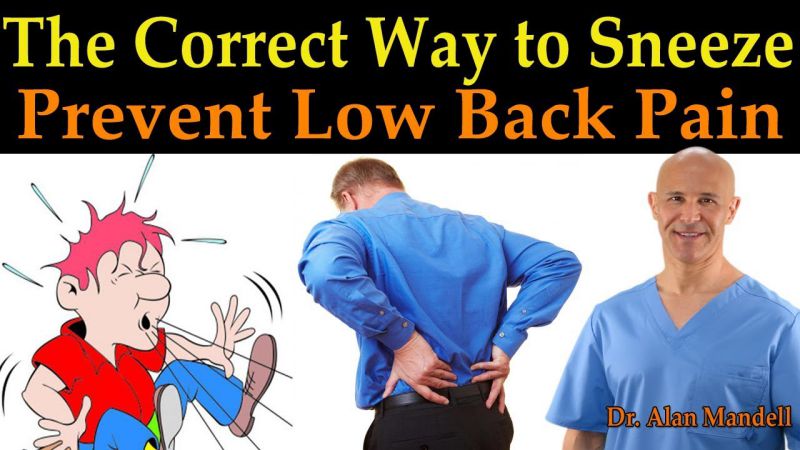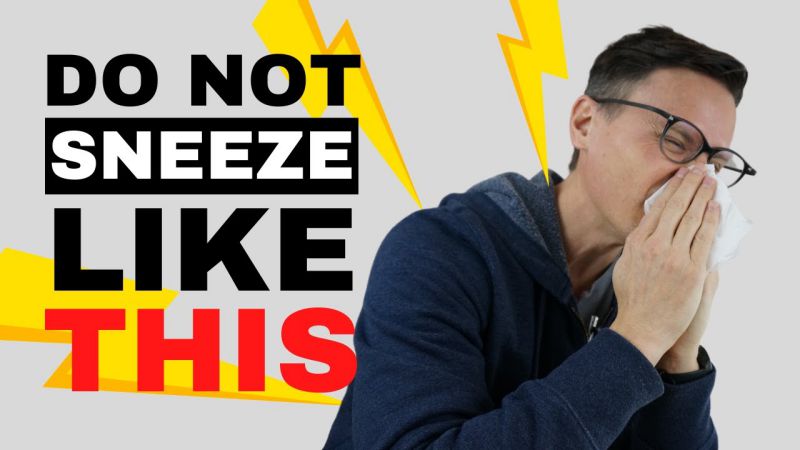Sharp lower back pain when sneezing is a common problem that affects many people around the world. This type of pain can be caused by various factors such as poor posture, injury, or even a medical condition. Sneezing is a reflex action that can cause sudden and intense pressure on the lower back muscles, resulting in pain.
It is important to keep in mind that while sneezing-related back pain may be a common issue, it should not be ignored. Ignoring this pain can lead to further complications such as chronic pain, decreased mobility, and even disability in severe cases. Let’s get into further details! Best Back Pain treatment
Table of Contents
Causes Of Sharp Lower Back Pain When Sneezing
Sharp lower back pain when sneezing can be a jarring experience that leaves you feeling uncomfortable and in pain. Sneezing is a natural bodily function, and while it can be helpful in clearing out your nasal passages, it can also lead to lower back pain in some cases. Below are the common causes of back pain while you sneeze:
Disc Herniation
When you sneeze, your abdominal muscles contract, which can cause the pressure in your spine to increase. If you have a herniated disc, this increased pressure can cause sharp lower back pain.
Infection
In rare cases, sharp lower back pain when sneezing can be a sign of an infection. For example, a urinary tract infection can cause pain in your lower back and abdomen that worsens when you sneeze or cough.
Spinal Stenosis
Spinal stenosis is a condition in which the spaces in your spine narrow, putting pressure on your nerves. This can cause pain and discomfort, especially when you sneeze or cough.
Spinal stenosis is more common in older adults, but it can also occur in younger people who have a family history of the condition.
Spondylolisthesis
This can cause sharp lower back pain when you sneeze, cough, or make sudden movements.
Muscle Strain
Muscle strain is a common cause of lower back pain. When you sneeze, the sudden movement can strain the muscles in your lower back, leading to pain and discomfort. People who are not physically active or have poor posture are more likely to experience muscle strain.
Degenerative Disc Disease
When you sneeze, the pressure on your spine can increase, leading to sharp lower back pain.
Osteoporosis
This can increase your risk of fractures, including fractures in your spine. When you sneeze, the sudden movement can put pressure on your weakened spine, causing sharp lower back pain.
What Are Diagnoses for Lower Back Pain?
There are several diagnostic methods that doctors use to diagnose medical conditions, including physical examination, imaging tests, and nerve conduction studies. By using a combination of these methods, doctors can accurately identify the problem and provide the best possible care for their patients.
When it comes to diagnosing medical conditions, doctors often rely on a combination of physical examination, imaging tests, and nerve conduction studies to accurately identify the underlying problem. Let’s take a closer look at each of these diagnostic methods.
Physical Examination
A physical examination is often the first step in diagnosing a medical condition. During this process, the doctor will assess the patient’s overall health and look for any physical signs of illness or injury.
They will use various techniques to evaluate different parts of the body, including the eyes, ears, nose, throat, heart, lungs, abdomen, and extremities.
Some common diagnostic tools used during a physical examination may include a stethoscope, reflex hammer, blood pressure cuff, otoscope, and ophthalmoscope.
The doctor may also ask the patient questions about their medical history, symptoms, and lifestyle habits to help guide the diagnostic process.
Imaging Tests
Imaging tests are a valuable diagnostic tool that allows doctors to visualize the internal structures of the body. Some common imaging tests used in diagnosis may include X-rays, CT scans, MRI scans, ultrasounds, and PET scans.
Each of these tests uses different technology to create detailed images of the body’s structures, allowing doctors to identify any abnormalities or areas of concern.
Best Treatments For Sharp Lower Back Pain
Living with chronic pain can be an overwhelming and debilitating experience. Whether you are dealing with a specific injury or a chronic condition, finding the right treatment plan can make a world of difference.
Change Your Lifestyle:
Making lifestyle changes can be an effective way to manage chronic pain. Here are some changes that may be helpful:
- Exercise: Regular exercise can help improve physical function and reduce pain levels. Talk to your doctor about developing an exercise plan that is safe and effective for you.
- Stress Reduction: Chronic pain can be exacerbated by stress. Try incorporating stress reduction techniques, like meditation or deep breathing, into your daily routine.
- Sleep: Try establishing a regular sleep routine and creating a sleep-friendly environment.
Pain Management:
Pain management is a crucial component of any chronic pain treatment plan. Here are some pain management strategies that may be helpful:
- Physical Therapy: Physical therapy can be an effective pain management strategy for certain types of chronic pain.
- Meditation: Meditation can help reduce stress and improve your ability to cope with chronic pain. Try taking a few minutes each day to practice deep breathing or mindfulness meditation.
Physical Therapy:
Physical therapy can be an effective way to manage chronic pain and improve overall physical function.
- Increase Strength: Strengthening exercises can help improve your overall physical function and reduce pain levels.
- Improve Posture: Poor posture can exacerbate chronic pain.
Related Posts:
- What Can You Do for Back Pain
- What Can I Do for Lower Back Pain
- What Can I Do for Back Pain Treatment
- Lower Back Exercises for Pain Relief
What Are The Best Prevention For Lower Back Pain While Sneezing?
Prevention is always better than cure, and when it comes to our physical health, it is essential to take preventive measures to avoid injuries and ailments.
There are various ways to prevent physical injuries and one of the most important ones is by adopting the right techniques and habits. In this article, we will discuss four effective ways to prevent physical injuries.
Proper Lifting Techniques:
Improper lifting techniques can cause back injuries, strains, and sprains. It is important to keep in mind to lift objects with your legs, not your back. Moreover, it’s also important to keep the object close to your body while lifting and not to twist while lifting.
Exercise and Stretching:
Regular exercise and stretching are vital for maintaining flexibility and strength, which in turn can prevent injuries.
Posture Correction:
Poor posture can cause back pain and muscle strain. To prevent this, it’s important to correct your posture. Also, avoid slouching while standing or walking.
Frequently Asked Questions
Q: Why does my lower back hurt when I sneeze?
Ans: Sneezing can cause a sudden increase in pressure in your spinal discs, leading to sharp pain in your lower back.
Q: Should I see a doctor if the pain persists?
Ans: Yes, if the pain persists or is accompanied by other symptoms such as numbness or tingling, it is important to see a doctor to rule out any underlying conditions.
Q: Can sneezing cause long-term damage to my back?
Ans: In rare cases, repeated sneezing can lead to long-term damage such as herniated discs or nerve damage, so it is important to address the issue and seek medical attention if necessary.
Q: Are there any exercises that can help strengthen my back and prevent pain when sneezing?
Ans: Yes, exercises such as back extensions, planks, and bridges can all help strengthen your back and reduce the risk of pain when sneezing.
Conclusion
Sharp lower back pain when sneezing can be caused by a sudden increase in pressure in your spinal discs. While it is usually not serious, it is important to address the issue through lifestyle changes and seek medical attention if necessary. Strengthening exercises and good posture can also help prevent this type of pain in the future.


